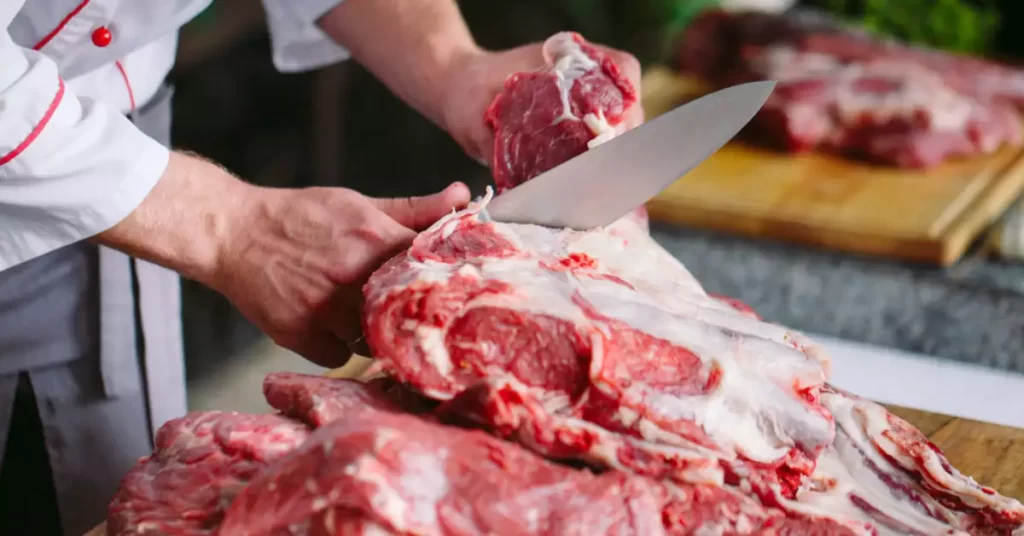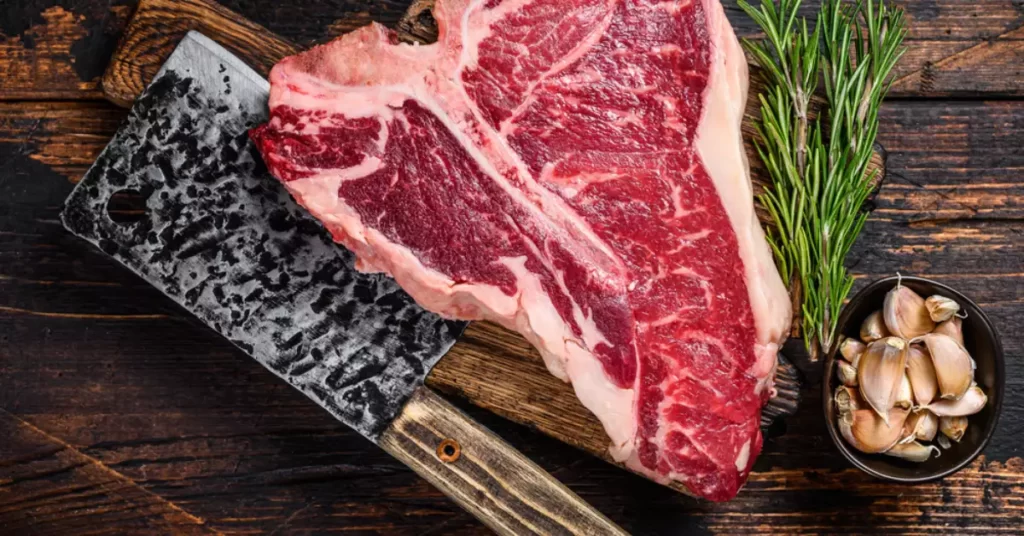There’s a moment in everyone’s cooking journey when they come across a seemingly insurmountable challenge.
You’re standing in the kitchen, staring at a piece of meat, wondering if your trusty kitchen knife can handle the task of cutting through bone.
Fear not, dear reader, as we embark on a culinary adventure to explore the capabilities of kitchen knives and the best techniques for slicing through bone.
Understanding Kitchen Knives
Different Types of Kitchen Knives
- Chef’s Knife: Versatile and multi-purpose, this knife is ideal for a variety of tasks like chopping, slicing, and mincing.
- Paring Knife: Small and precise, it’s perfect for peeling, trimming, and slicing fruits and vegetables.
- Bread Knife: With a serrated edge, it easily cuts through crusty bread and soft pastries.
- Boning Knife: Designed for deboning meat and fish, this knife has a sharp, narrow blade.
- Cleaver: Featuring a thick, heavy blade, it’s built for cutting through bones and sinew.
Kitchen Knife Materials
Stainless Steel: Rust-resistant and affordable, stainless steel knives are a popular choice for many home cooks.
Carbon Steel: Prized for their sharpness and edge retention, carbon steel knives require more maintenance but offer exceptional cutting performance.
Ceramic: Lightweight and razor-sharp, ceramic knives are ideal for slicing fruits and vegetables but can be brittle and prone to chipping.
What is a Kitchen Knife Used For?
A kitchen knife is an essential tool for preparing a wide variety of foods. Depending on the type of knife, it can be used for tasks such as chopping, slicing, dicing, mincing, peeling, and deboning.
Each knife has a specific purpose and is designed for optimal performance in its intended task.

Can a Kitchen Knife Cut Through Bone?
In short, yes, but with some caveats. A standard kitchen knife, such as a chef’s knife or paring knife, is not designed for cutting through bone.
However, some specialized knives, like a cleaver or a boning knife, are specifically designed for this purpose.
Using a Cleaver
A cleaver is designed to handle heavy-duty tasks like cutting through bones, sinew, and tough cuts of meat. Its thick, heavy blade can easily break through small to medium-sized bones.
Using a Boning Knife
A boning knife is meant for deboning meat and fish but can handle cutting through some smaller bones. Its sharp, narrow blade allows for precise cuts around the bone.
While not as powerful as a cleaver, it’s suitable for tasks like cutting through the bones of smaller animals, such as poultry or fish.

How to Use a Knife for Cutting Bone
Using a Cleaver
- Place the bone on a stable cutting surface: Ensure you have a sturdy cutting board to prevent accidents.
- Raise the cleaver above the bone: Hold the cleaver with a firm grip and position it above the bone.
- Strike down with force: Apply a strong, controlled force to cut through the bone. Repeat as necessary.
Using a Boning Knife
- Locate the joint: Identify the joint or area where the bone connects to another bone or to the meat.
- Insert the tip of the knife: Carefully insert the tip of the boning knife between the bone and the meat or at the joint.
- Slice through the bone or joint: Apply steady pressure and use a sawing motion to cut through the bone or joint.
Tips for Cutting Through Bone
- Choose the right knife: Use a cleaver for heavy-duty tasks or a boning knife for smaller bones.
- Sharpen your knife: A sharp knife makes cutting through bone easier and safer.
- Use a stable cutting surface: A sturdy cutting board will help prevent accidents.
- Apply even pressure: When cutting, use controlled, even pressure to avoid accidents.
- Follow safety guidelines: Always cut away from your body and keep your fingers clear of the blade.
Common Misconceptions About Cutting Through Bone
Damaging Your Knife
While it’s true that using a chef’s knife or paring knife to cut through bone can damage the blade, using the appropriate knife for the task will minimize the risk of damage.
Dulling Your Knife
Cutting through bone will inevitably dull your knife over time. However, proper sharpening and maintenance will help prolong the life and performance of your knife.
FAQs
Q: Can I use a chef’s knife to cut through bone?
A: Although it’s possible, it’s not recommended. Chef’s knives are not designed for cutting through bone and doing so can damage the blade. Instead, use a cleaver or a boning knife for this purpose.
Q: How do I sharpen my knife after cutting through bone?
A: To sharpen your knife, you can use a whetstone, a honing rod, or a knife sharpener. Follow the manufacturer’s instructions for the specific sharpening tool you’re using. Regular sharpening will help maintain your knife’s performance and edge.
Q: Can a ceramic knife cut through bone?
A: Ceramic knives are not suitable for cutting through bone. They are lightweight and razor-sharp but can be brittle and prone to chipping. Ceramic knives are best used for slicing fruits and vegetables.
Final Thoughts
In the culinary world, the question of whether a kitchen knife can cut through bone has a nuanced answer.
While standard kitchen knives like chef’s knives and paring knives are not designed for this task, specialized knives like cleavers and boning knives can handle the job.
By choosing the right knife, sharpening and maintaining it properly, and following safety guidelines, you can confidently tackle the challenge of cutting through bone in your cooking adventures.
